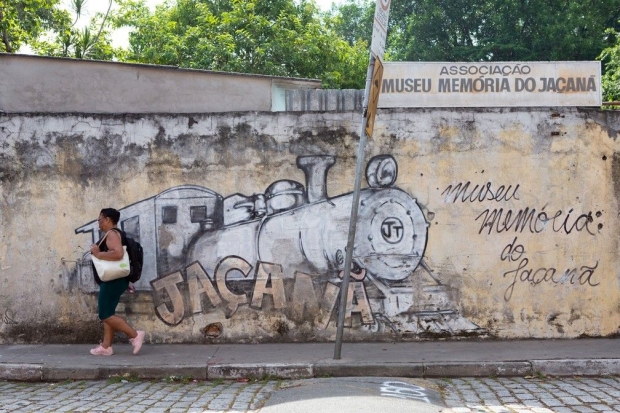In his just premiered 3D/CG short film, Brazilian animator Pedro Conti confronts his fears and celebrates his culture in the midst of a pandemic.
Like almost everyone, animation artist Pedro Conti was strongly affected by the COVID-19 pandemic that ravaged – and continues to afflict – the world community. Unlike many who make their living in the animation industry, however, Conti lives in Brazil, a third-world country that was hit especially hard by the virus, ranking second, after the U.S., in the total number of COVID-related deaths.
In Tamo Junto (“Together”), Conti uses locations and events from his own life to tell a simple story about two neighbors who help each other during the dark days of the pandemic, creating special moments to ease their loneliness and fear. Made over the course of about 16 months between May 2020 and September 2021, the 3D/CG film offers a heartfelt testament to the power of kindness, as well as a memory piece that evokes the sights and sounds of the neighborhood where Conti grew up.
We spoke with Conti – who in his day job works as a freelance visual development artist for such clients as Walt Disney Animation Studios, DreamWorks, Paramount Pictures, and Marvel – about the production of Tamo Junto and what it was like to be in Brazil during the recent plague year.
Enjoy Conti’s film and interview:
AWN: Brazil was hit very hard by COVID. How were you affected personally?
Conti: COVID affected the life of pretty much everyone in Brazil. We lost a couple of close friends, including one of my best friends that I grew up with. He was 35 years old and had a one-year-old baby. The poetry in the credits was my way of paying tribute to him. My wife and I ended up moving to another city in the south of Brazil, as we wanted a little more space to breathe. I have a three-year-old boy who demands a lot of attention and at some point we felt he was really affected by not interacting with other kids. We were really concerned about him for most of the pandemic.
AWN: Was the film made entirely during the pandemic, and how did that affect the production process?
Conti: Yes, the film was made during the pandemic. We had a lot of breaks, as I was also doing commercial work and sometimes I didn’t have the energy to keep working on it. But the film was a way to have sweet little moments interacting with the team and sharing ideas – or just chatting about life. It was also a way to collaborate with artists I admire.
AWN: Tamo Junto seems very autobiographical. How much is actually based on your personal experience?
Conti: I made the film to try to address some stuff I was struggling with internally. The pandemic started a few months after I lost my father in a really dramatic way. I was really scared. So the story and these characters were a way for me to believe things would work out in the end. The film is fully based on life events and experiences I had in the past. I also wanted to use it to share a bit of Brazilian culture and to convey our sense of community.
AWN: The “Memories of Jaçanã Museum” appears several times in the film. Can you explain what that is?
Conti: I grew up in Jaçanã, which is a low-income neighborhood in São Paulo. There used to be a train station there that became very famous when the Brazilian singer-songwriter Adoniran Barbosa wrote the song “Trem das Onze” (“The 11 P.M. Train”), an old classic of samba music that’s set in Jaçanã. The museum is in a little old house, where they keep some train parts and pictures of Adoniran. I used to go there as a kid. It’s the only cultural/historical place in the area that I remember.
In the film, Dinho, the main character, has a photo of himself and his mother at the museum, and every day he walks around the area to see the flowers and remember his mom. I used the train of Jaçanã as a symbol and metaphor to guide the story.
AWN: Can you identify any particular artistic or other influences that contributed to the style of the film?
Conti: I think nowadays I’m very detached from animation references. Although I’ve been influenced by Disney and Pixar films, I'm more into trying to take raw information from life experiences and convert it into my own art. I’m more influenced by Brazilian hip-hop culture. Artists like Racionais MC’s, Emicida, Criolo, and many others impacted me a lot on the storytelling side.
AWN: What was the biggest challenge in making the film?
Conti: The whole film was a challenge. Because it’s an independent, low-budget film – as well as a side project – I wasn’t able to have a team working full time. To keep it going and make it work with the whole team was definitely a big thing. At least 10 times, I almost gave up on it. Thankfully, the team kept pushing to move forward. So I really have no words to express how much I appreciate all of the artists that were involved in the production.
AWN: Ideally, what do you want a viewer to take away from the film?
Conti: We can't predict how art will touch people's hearts. I can say for myself that the goal was to try to believe in this sense of care and cooperation when everything was broken. I couldn't recognize my country during the pandemic. I don't want to change the world, but I wanted to remind viewers about those little precious moments of life.











